Summer is synonymous with road trips. There’s no need to worry about icy roads or snow storms. School’s out and businesses are back in full swing to support summer travelers. It’s the perfect time of year to hit the open road for an epic adventure. And there is no better place to do this than in Southern Utah’s Bryce Canyon Country.
A geological masterpiece sculpted by time, the landscape of Southern Utah begins with the Colorado Plateau, upon which Southern Utah rests. The massive area encompasses everything from the natural rock arches of Arches National Park and the deep canyons of Canyonlands National Park to the waters of Lake Powell, with Bryce Canyon National Park, Zion National Park and Capitol Reef National Park anchoring the land in between.
Garfield County Utah, otherwise known as Bryce Canyon Country, is the fifth-least populous county in Utah, the vast landscape holds just over 5,000 residents — with one inhabitant per square mile — making it also the least densely populated county in the state. Because of this, traveling here, even in the busy summer months, can sometimes feel like you have the entire place to yourself or at least much less crowded than Colorado. This remote destination offers all the fun with a vast landscape filled with hoodoos and arches, deep canyons and slot canyons, rivers and red rocks, all without the crowds.
Discover how to have an epic road trip from Denver to Bryce Canyon Country, where remote roads lead to an unveiling of not only a landscape that’s etched with beauty but also a treasure trove of rich history waiting to be discovered.
Capitol Reef National Park
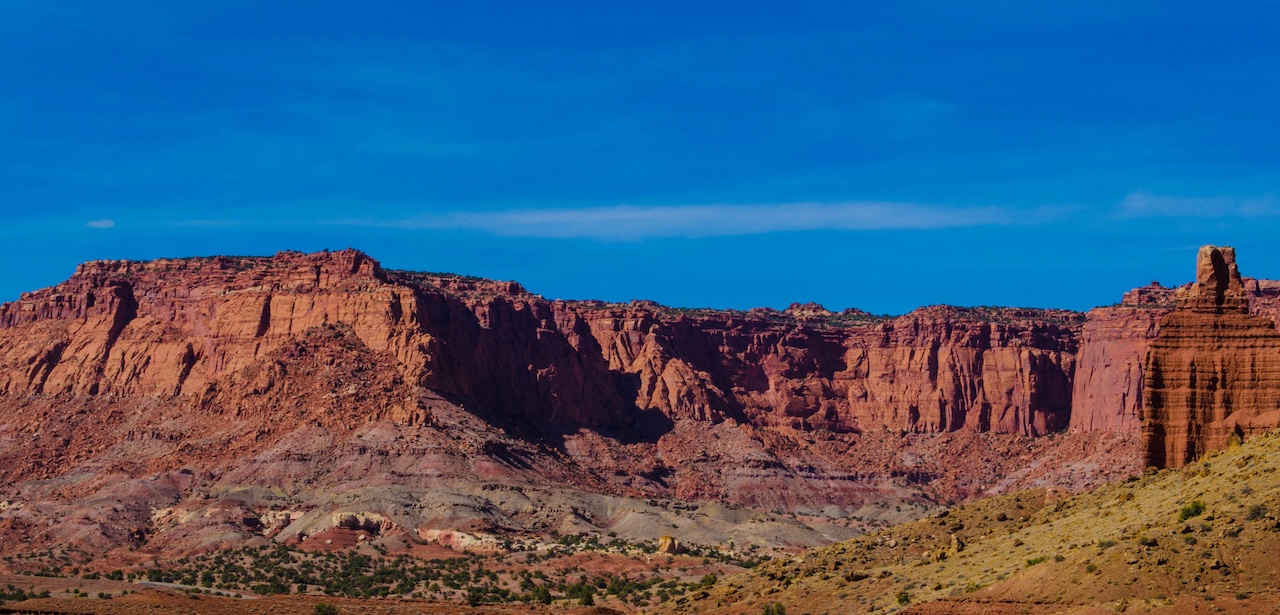
The lowdown: Begin your exploration of Bryce Canyon Country with a visit to Capitol Reef National Park. You’ll know instantly when you’ve arrived at the park’s most iconic feature, the Waterpocket Fold, a 100-mile-long warp in the Earth’s crust. The park gets its name “Capitol Reef” from the white domes of Navajo Sandstone that resemble domed capitol buildings and the large rocky cliffs that are a barrier to travel, much like an ocean reef.
Drive along HWY 24 and as you enter the park, you’ll encounter some of the park’s top highlights: the Hickman Bridge Trail, the petroglyph panels, Ripple Rock Nature Center, the visitor center and the 200-acre Fruita Rural Historic District where you can camp and pick fruit from the orchard’s bountiful trees. Note: fruit taken from the orchards must be paid for.
Explore by simply taking a scenic drive through the park or venturing out on one of the park’s many trails that wind through narrow canyons, or strike out on backcountry dirt roads to see what you find.
Where to stay: Located just one mile from the park, Capitol Reef Resort offers a variety of lodging options including rooms and suites, wagons, teepees and cabins — all available for overnight accommodations.
Travel the All-American Road
For the ultimate summer scenic road trip, continue south and drive along the Scenic HWY 12. The epic 123-mile driving route follows some of the most beautiful landscapes of the American Southwest, for which it was named the “All-American Road.”
Jaw-dropping scenery and a road that follows and clings to the land, it’s one road trip where you almost feel a part of the landscape. The paved two-way road climbs to the highest of heights along the famous “Hogsback” stretch, and curves corners of slick rock, highlighting scenic vista points along the way that offer views for as far as the eye can see.
The scenic byway connects U.S. 89 near Panguitch with S.R. 24 near Torrey, Utah and will be your main thoroughfare through Bryce Canyon Country. As you climb through the Dixie National Forest from Torrey, one of the best spots for a scenic overlook is at the road’s summit at 9,000 feet. This stop gives you some of the best views of Bryce Canyon Country, with the contrasting red rocks of Capitol Reef, the distant Henry Mountains and the expansive desertscape of the Grand Staircase-Escalante.
Connecting Capitol Reef National Park and Bryce Canyon National Park, the road winds through parts of the Grand Staircase Escalante National Monument and nearby state parks such as Kodachrome Basin, Escalante Petrified Forest, Anasazi State Park Museum.
Grand Staircase Escalante National Monument
Spanning nearly 1.9 million acres, from Bryce Canyon to Grand Canyon, the rugged and remote terrain of the Grand Staircase Escalante National Monument is one of the most scenic yet overlooked destinations in the U.S. The monument received its name “Grand Staircase” for its large sequence of sedimentary rock layers stretching south from Bryce Canyon National Park, through Zion National Park and into Grand Canyon National Park. This huge “stairway” of rock, ascends north out of the Grand Canyon, encompassing much of Bryce Canyon Country.
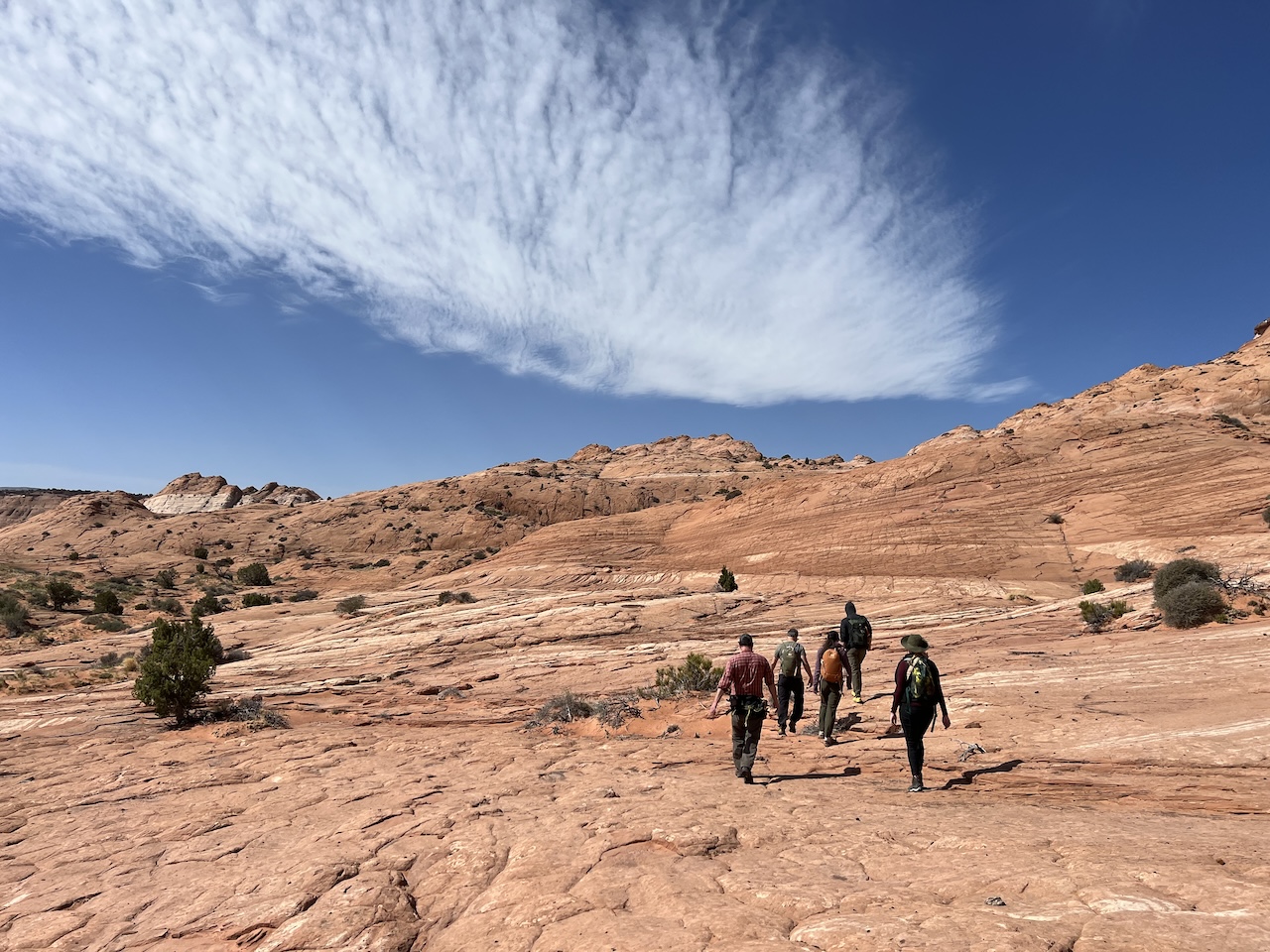
Aside from the monument’s vast desert views, many travelers come here to plunge into the deep red walls of the area’s many slot canyons. While some of the most popular slot canyons to explore, including Peek-a-boo and Spooky Gulch, don’t require a guide, getting to some of the monument’s more remote and off-the-grid slot canyons requires a guide. Excursions of Escalante is the premier tour company that takes you beyond the more accessible places (Spooky, Peekaboo, Big Horn, etc.) and into the most remote, beautiful and pristine corners of the Escalante region. Choose your own adventure with slot canyon hikes and canyoneering options to explore the area’s most remote and slender slots.
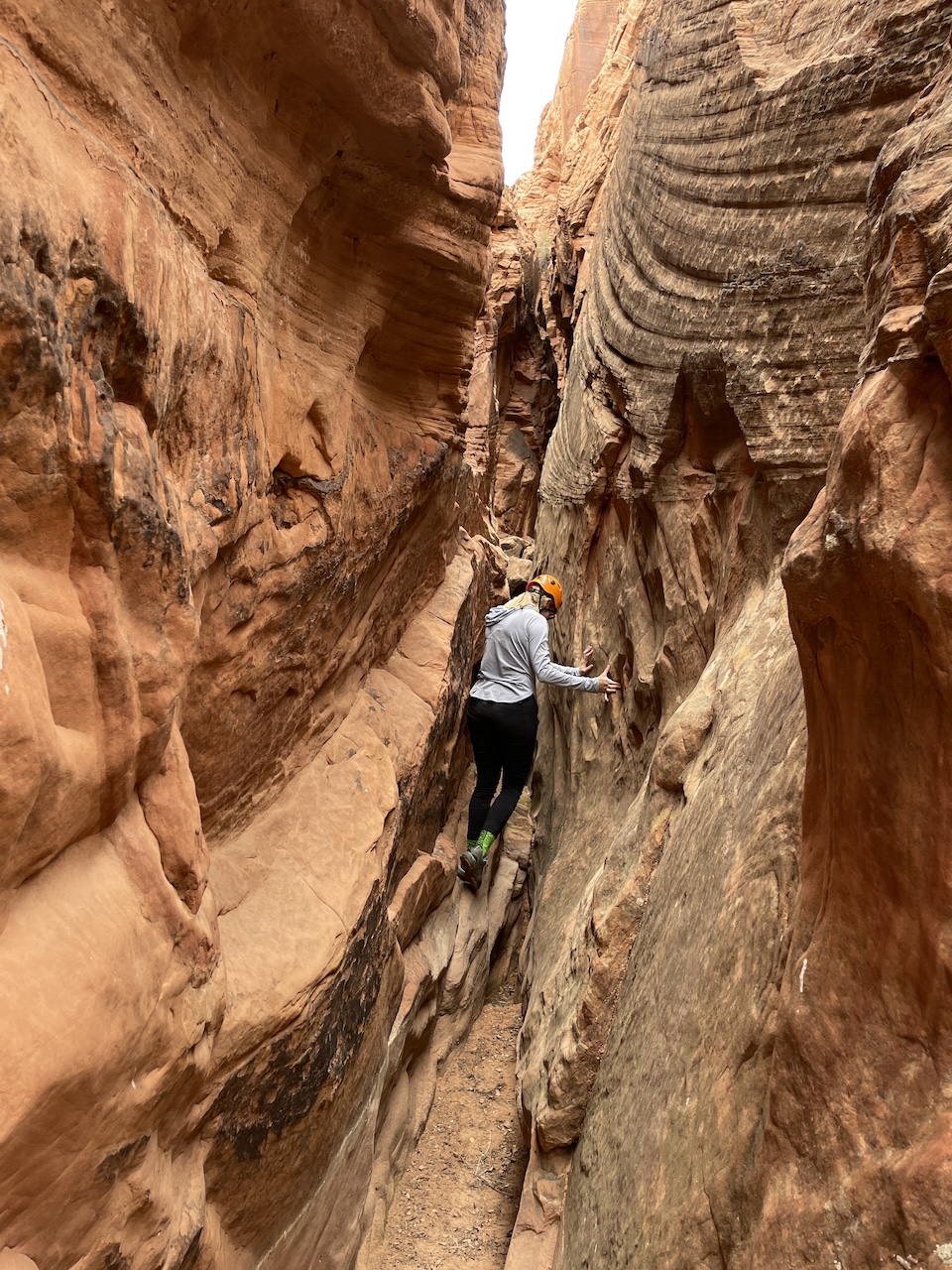
If tiny spaces aren’t your thing, “regular” hiking is another option. Part of what makes visiting the monument special is its limited access to trails and the land itself. Very few can be reached on paved roads, with most accessed via unpaved dirt roads. These backroads throughout the monument not only offer access to numerous trailheads, they also offer exceptional scenic driving potential.
The only two designated trails (with signs) in the Grand Staircase can be accessed directly from HWY 12 — Upper and Lower Calf Creek Falls. Upper Calf Creek is a short two-mile hike round trip but with a steep climb to the falls. Lower Calf Creek Falls is longer at six miles but is mostly flat.
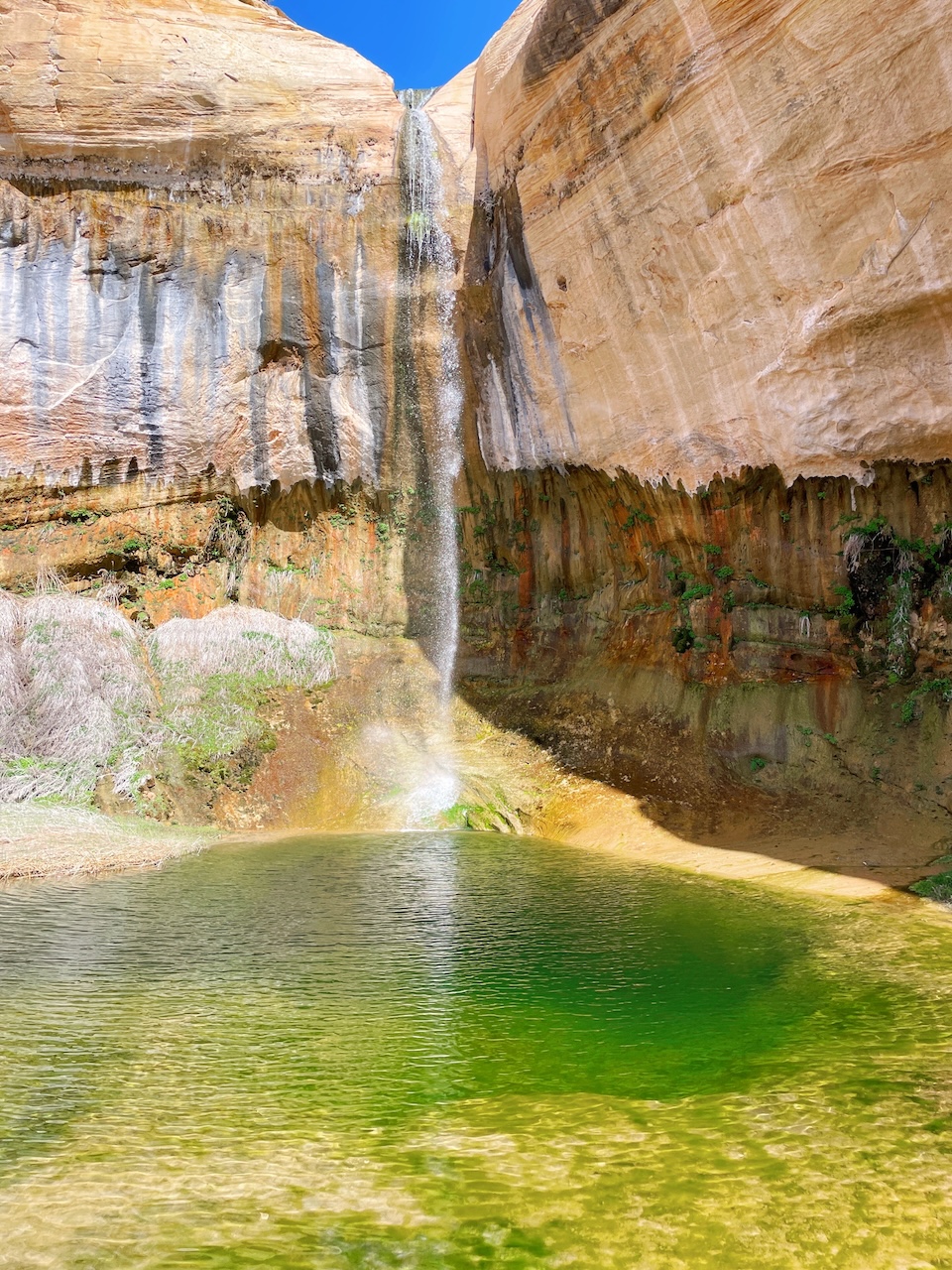
A unique way to get a great overview of Bryce Canyon Country is with an ATV tour from Grand Staircase ATV Tours. See the “back gate” to Bryce Canyon National Park from the little town of Tropic to view the highest plateaus and cliffs that make up the “steps” to the Staircase. A husband-and-wife team own the company and provides a wealth of knowledge and information about the area. Just a 10-mile drive from Bryce Canyon National Park located in Tropic, the company offers private guided tours into the Grand Staircase Escalante National Monument.

Where to stay: While there is camping available throughout the monument, the town of Escalante offers a few hotel options, including the Canyon Country Lodge. Or if you are looking for some glamping options book a few nights at Ofland Escalante (formerly Yonder Escalante). The newish glamping property features deluxe modern cabins, refurbished airstreams, campsites and RV hookups. They provide food on the premises, a food truck, spa-like bathrooms, and a drive-in movie theatre with old classic cars. It’s truly one of the more unique places to stay in Southern Utah.

Bryce Canyon National Park
The lowdown: Continuing along HWY 12 heading west you take you directly to Bryce Canyon National Park — the heart of Bryce Canyon Country.
Bryce Canyon National Park is an otherworldly landscape, famous for its breathtaking amphitheaters of towering hoodoos. These hoodoos are distinctive spire-shaped rock formations that lay the groundwork for this incredibly unique place. The whimsical, orange and red hoodoos rise in dense concentrations, forming a surreal panorama across the amphitheaters and maze-like trails below the rim.

Driving into Bryce Canyon initially throws off first-time visitors with its forests of ponderosa pines along the flat plateau. Here is where you’ll find most of the park’s camping spots and access to the canyon and its overlooks. The out-and-back 18-mile road stretches the length of the park and is the jumping-off point for all vehicle and trail exploration.
Hiking amongst the hoodoos is a must, with popular trails including the Fairyland Loop, Navajo Loop, Queens Garden and the Rim Trail. Scenic views from Sunrise, Sunset and Inspiration point should not be missed as well.
Or explore the diverse canyon as the first settlers to discover the area did, by way of horseback. Saddle up with Canyon Trail Rides, the only horseback outfitters inside the park, with their two-hour guided tour through the heart of Bryce Canyon. The best part? This trail is not accessible to hikers or backpackers, so you get to see some of the canyon other visitors don’t get to see.
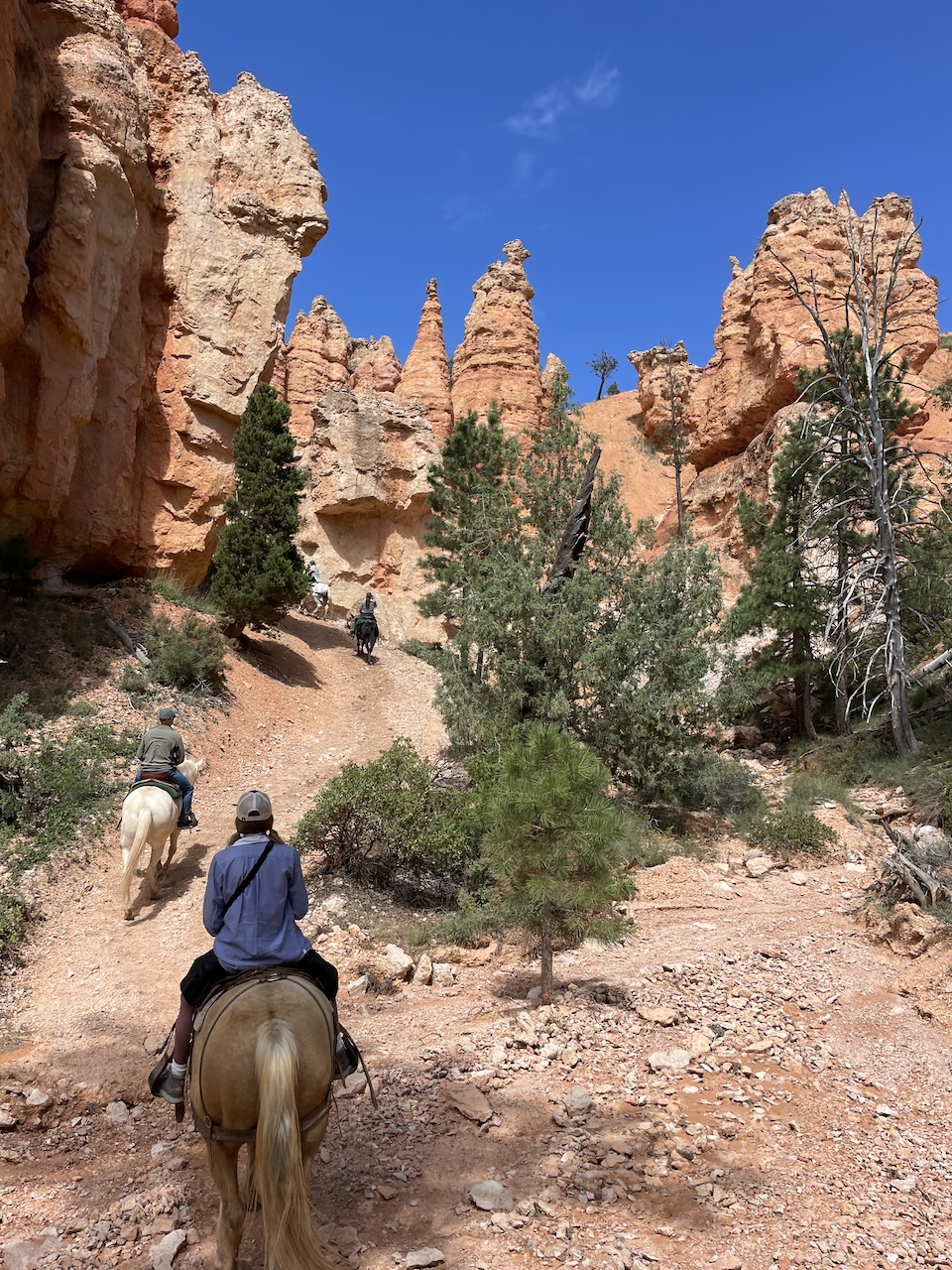
Where to stay: For the ultimate in desert glamping, snuggle up for the night at Under Canvas Bryce Canyon. Practically the inventor of luxury glamping, Under Canvas, features luxurious safari-like tents set amongst the stars and the desert’s red rocks. Its remote location off HWY 12 and 20 minutes to the park, makes this the perfect option for “getting away from it all.” Inside the canvas tents, enjoy spacious accommodations, in-tent bathrooms and toilets, a personal wood-burning stove for those cool nights and plush linens and bedding.
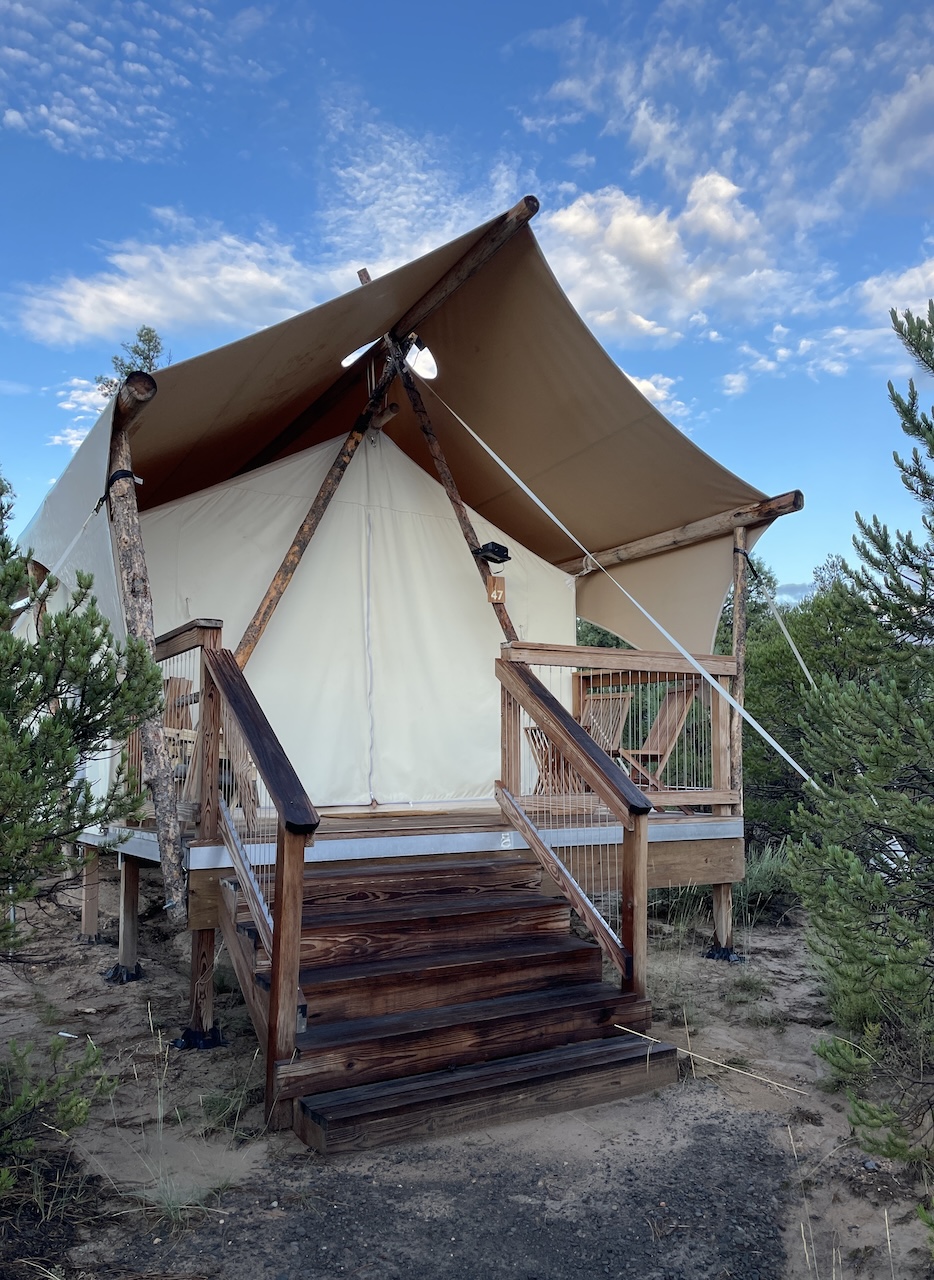
Bryce Canyon City offers a few lodging options as well. But whether you stay in town, are camping or enjoying a luxury stay at Under Canvas, dinner and dancing at Ebenezer’s Barn and Grill is a must. From April – October, every night, enjoy live country music for a classic hoedown and BBQ dinner.
Getting there
If you are road-tripping it, prepare for a 6.5-hour drive from Denver to Capitol Reef National Park to kick things off. And if you plan to include most of what is listed above, then prepare for 4 – 5 days for exploring and getting around.
If you don’t want to drive, consider a direct flight from Denver to Salt Lake City — roughly a 1.5-hour flight — and renting a car or hiring Southwest Adventure Tours for private transportation and day tours to Bryce Canyon Country.





